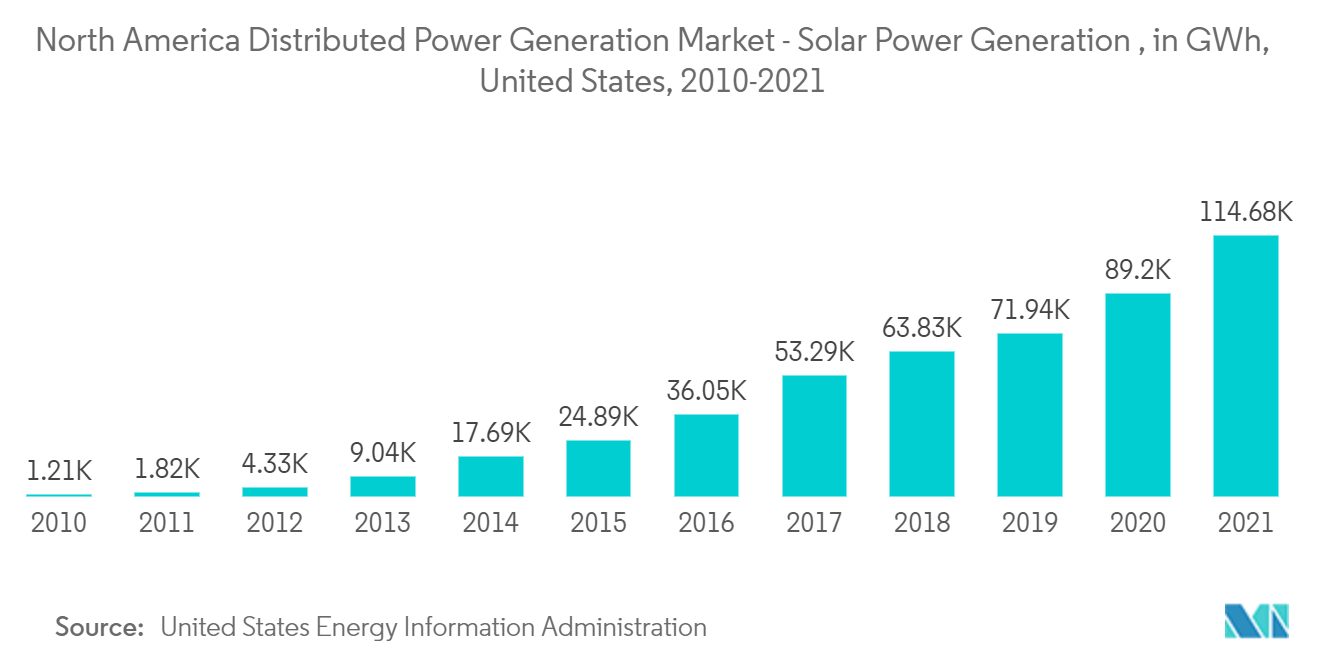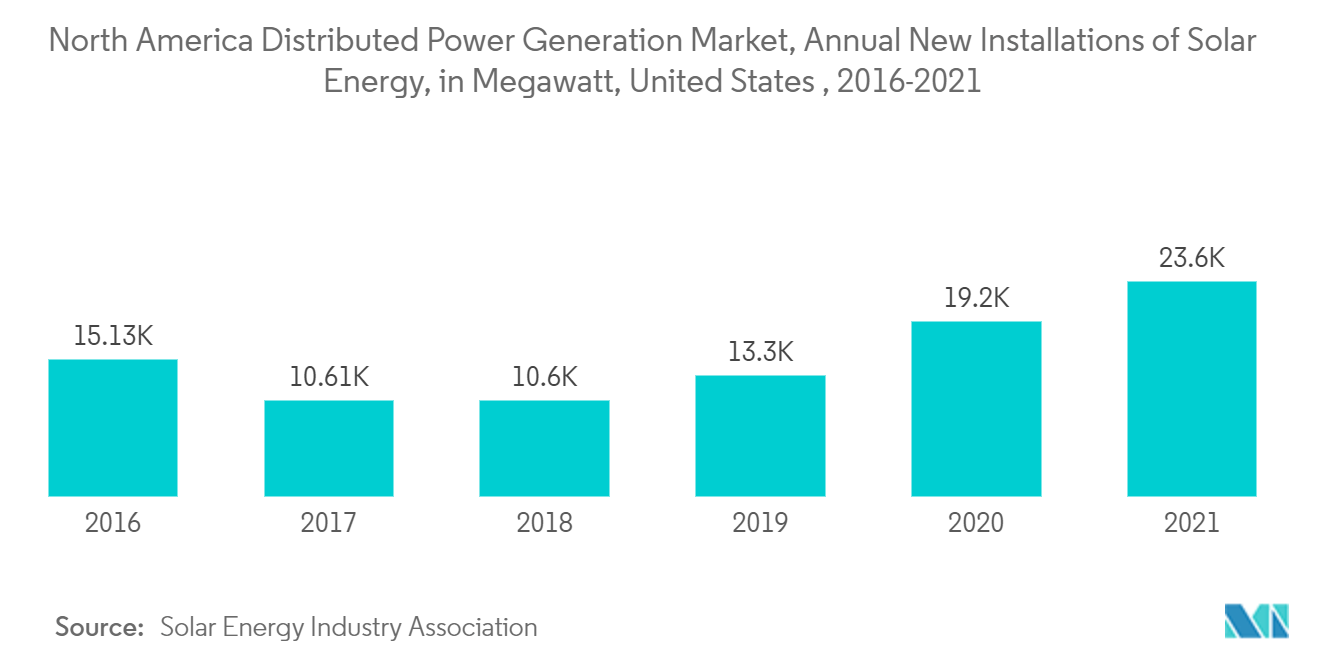Market Trends of North America Distributed Power Generation Industry
This section covers the major market trends shaping the North America Distributed Power Generation Market according to our research experts:
Solar PV Sector to Witness Significant Growth
- The solar PV sector is expected to witness significant growth during the forecast period. It is the most popular form of distributed power generation due to its relatively low setup cost, declining prices of solar panel manufacturing, and increasing government subsidies.
- Increasing demand for clean energy is one of the primary drivers for the region's distributed solar power generation market. The small-scale solar capacity installations in the United States increased by 5.4 GW in 2021, up by 23% from the 2020 level (4.4 GW). Most of the small-scale solar capacity added in 2021 was installed on homes. Residential installations totaled more than 3.9 GW in 2021, compared to 2.9 GW in 2020.
- Rooftop solar offers the benefits of modern electricity services to households with no access to electricity, thus reducing electricity costs on islands and in other remote locations that are dependent on oil-fired generation and enabling residents and small businesses to generate their electricity.
- Commercial and industrial systems remain the largest growth segment as they are usually more inexpensive and have a relatively stable load profile during the day, which can enable larger savings on electricity bills, depending on the policy scheme in place.
- According to the survey by the Solar Energy Industries Association (SEIA),conducted in September 2022, the US solar market is expected to nearly triple over the next five years. Recently, the US President Joe Biden also signed the largest climate bill in the country, which may further boost the growth of the country's solar energy market.
- Therefore, such factors are expected to drive the North American distributed power generation market during the forecast period.

United States is Expected to Dominate the Market
- The United States dominated the North American distributed power generation market in 2021. The country is expected to continue its dominance in the coming years as well. The United States holds vast potential for the expansion of distributed energy systems (DES), notably in the form of off-grid and residential solar. Inefficiencies in the power grid infrastructure, power supply shortages, and the scalability of decentralized technology pave the way for the deployment in the country.
- California leads the distributed solar PV sector in the country, with more than 1,000 MW residential solar PV installations in 2021. The state has a total residential installed capacity of over 5,000 MW.
- Different states have set different goals to increase their individual renewable energy targets. For example, Hawaii has set a 100% renewable target by 2045, while Arizona has set a 45% renewable by 2030 and 100% clean energy by 2045. These individual targets are expected to help further boost the country's distributed solar power generation market.
- In 2021, the new solar photovoltaic capacity installations in the United States reached approximately 23.6 gigawatts. Solar had the largest share of new electricity-generating capacity in the country.
- In November 2021, Orsted and Eversource selected Siemens Energy to supply transmission system for a 924-MW Offshore Wind Farm in the United States. The plant is located more than 30 miles east of Montauk Point, New York, and will generate clean energy to power nearly 600,000 homes in New York. It is expected to be operational in 2025.
- In May 2022, Green Lantern Solar developed a 500-kW solar project in Weathersfield, Vermont. The project will supply clean energy to a local retirement community in Vermont. The solar project is estimated to generate approximately USD 150,000 annually in credits divided among the off-takers.
- Hence, due to such developments, the United States is expected to dominate the North American distributed power generation market during the forecast period.


